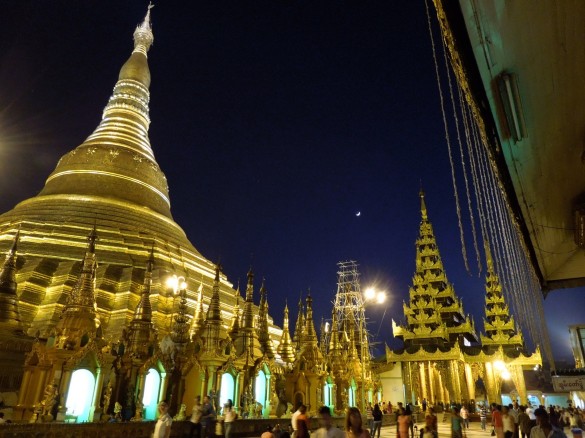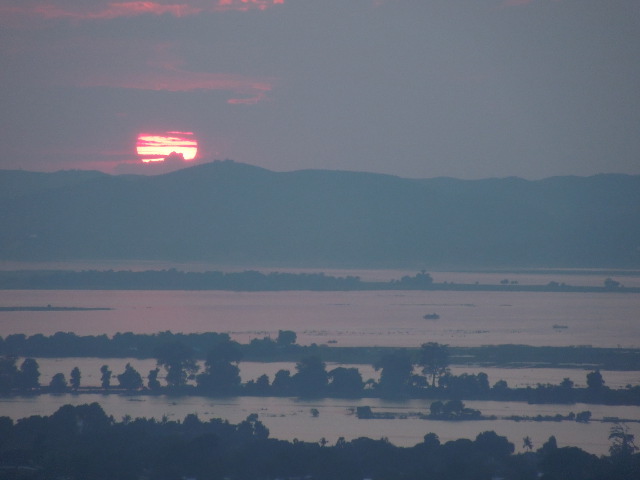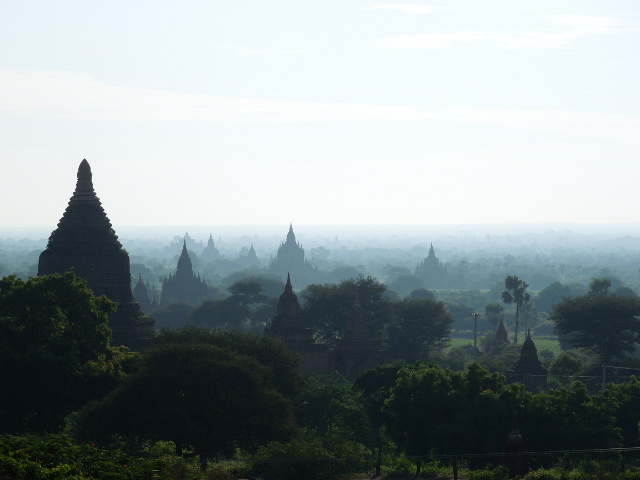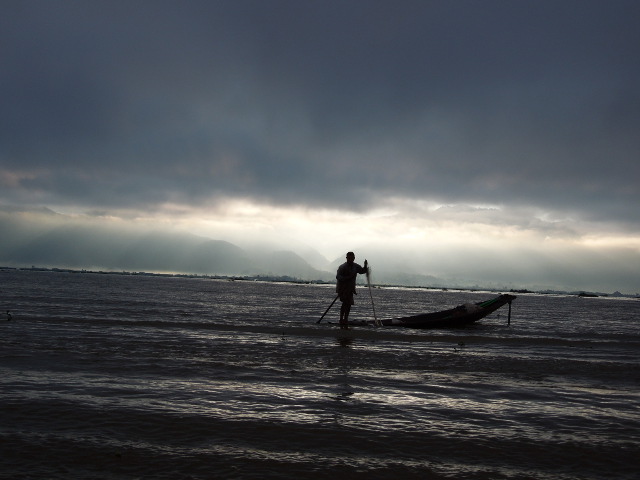Myanmar was #2 on our list of Top Indie Travel Destinations for 2013!
As President Obama demonstrated by making it his first foreign trip following re-election, Burma is back on the map. With recent democratic elections, censorship relaxed, political prisoners being released, and sanctions being lifted, I decided to check out the country of Myanmar, for so long off-limits to ethically-minded travelers. Crucial to my decision was that Aung San Suu Kyi’s National League for Democracy (NLD) has lifted its fifteen-year travel boycott and now welcomes independent travelers. Burma is open for business.
Nevertheless, many of those visitors who do choose to make the trip are acutely aware that their spending could fall into the hands of the generals or their cronies. The government fees that tour operators must pay is one of the reasons that tour groups are not yet welcomed by the NLD. Due to government links and the fees necessary to operate, many people choose to avoid internal flights. As a result, independent travelers are generally careful to target their spending and limit the amount going directly to the government as much as possible.
Burma or Myanmar?

A lot can be read into what you choose to call the country. Burma is the historic British name, but the old ruling military junta officially renamed it Union of Myanmar in 1989. The NLD does not recognize the legitimacy of that government to have changed the name. Many countries, including the UK, continue to use Burma, viewing use of Myanmar as tacit approval of the government, whereas the UN has adopted Myanmar as it believes all member states have the right to choose their names. However, Burma is not an inclusive term, but refers to the Bamar people, ignoring the many other peoples living within the borders. However, for the most part, local people call it Myanmar.
In 2010, Myanmar received only 300,000 foreign visitors (excluding border tourists on visa runs). Contrasted with Thailand’s 14 million tourists, you could be forgiven for thinking that you are headed to an undiscovered paradise. However, visitor numbers to Burma have exploded this year, and some of the tourist infrastructure is struggling to cope, with many of the hostels fully booked. On the other hand, the bus network has rapidly improved. Direct routes now link the major tourist sights, and a new highway joins Yangon and Mandalay via the new capital of Nay pyi daw, slashing journey times. In addition, there is free transport to and from bus stations often located unhelpfully far out of town.
As in other Southeast Asian countries, your guesthouse can sell you almost anything you could want, from bus tickets and tours, to bike hire and money changing. There are also numerous agencies willing to help if you are trying to spread your spending or are looking for something specific. This makes getting around surprisingly easy, if painfully slow, and you are free to wander in the central core of the country, where Myanmar’s big sites are contained in a triangle – eight to ten hours either side of Mandalay.
Several factors generally combine to keep travelers in the central core of the country. There is little chance to dawdle as travelers are only issued one-month visas. In addition, there are stringent requirements for permits to visit outlying areas, and restrictions that make entering Burma overland from any of its neighbors almost impossible. With minorities making up a third of Myanmar’s population, but concentrated in states on its borders, there are a number of wars and insurgencies being fought at the fringes of the country. Just a few months ago, civil unrest broke out between Buddhists and Rohingya Muslims for the second time this year.
Why Burma is different

But Burma is a fascinating country and a joy to visit, in part because foreign tourists are still, at the moment, such a novelty. There is none of the hassle you get elsewhere in the region, and very little crime aimed at backpackers. This is despite the fact that with no banks that accept foreign cards, every traveler is obliged to carry all cash for their entire stay in clean, crisp, new US dollars. Keeping them pristine enough for anyone to accept is all part of the challenge, as at every transaction your money will be scrutinized for the smallest mark, nick, or tear.
Even the hawkers at tourist sites only half-heartedly offer you their wares, before switching to more interesting topics like where you come from and how old you are. People stop you in the street just to ask how you are. You wait for the ulterior motive, for the offer of a guide, to take you to a relative’s shop, or to exchange money, but it rarely comes. Often, having inquired about your country of origin, there is a nod, a flash of a smile, and then they are gone.
Until recently, almost all tourists were obliged to start and finish their visits in Yangon, as Rangoon is now known. However, Air Asia now offers an international flight direct into Mandalay three times a week, giving future travelers the option of spending their entire stay upcountry where the bulk of the sights are. This would be a shame, as Yangon is still very much worth a visit. It is home to the Shwedagon Pagoda, a thousands-of-years-old gilded stupa that shines in the bright tropical daylight. Set on a hill in the center and visible from everywhere in the city, at night it is lit up and glows like a beacon. Walking inside the enormous complex, barefoot and surrounded by shining marble and gleaming gold, you forget you are in the center of the dirt and bustle of one of the biggest cities in the country, as birds wheel overhead, monks pray, pilgrims pass, lovers stroll, and children play.
In contrast, the city of Mandalay is neither as romantic, nor as exotic as Kipling’s title would have you believe. These days it is a crowded, polluted city of a million people. The Royal Palace of the last Burmese kings burned down during WWII fighting between Britain and Japan. While there are a number of old temples and monasteries sprinkled throughout the city, its real draw, other than being at the end of the easiest and smoothest bus ride you will experience in Myanmar, are the ruined and abandoned royal capitals that surround it. Although eyebrows were raised at the junta’s decision to spend billions on the new capital, it is in line with long-held Burmese tradition for each new dynasty to build a new capital.
These periodic building booms have left a number of ruins for tourists to explore, including the temple-topped hill of Sagaing, blessed with fantastic views over the Irrawaddy River, where an entire family queued to have their photos taken with us. Further upriver, workmen and boats marshall huge cargoes of teak on its way from the highlands to the coast. Nearby, the remains of Inwa are visited by horse and carriage, as huge stone temples dot a huge area of paddy fields, the wooden houses in-between having long-since rotted away. At Amarapura, U Bein’s Bridge is the longest teak bridge in the world. As it winds its way picturesquely across the lake, it is crossed by schoolchildren and monks, while fishermen stand up to their noses in water in its shade, waiting for a bite.
Bagan

Bagan is Myanmar’s top sight. The headline story of a plain sprinkled with over four thousand temples built more than one thousand years ago would grab anyone’s attention. But don’t come here expecting another Angkor. Instead, the authorities have applied a unique philosophy to the ruins, which is to reconstruct them all as good as new. The reconstructions have received some criticism for paying no attention to original designs or construction techniques. In such an active earthquake zone, many of the temples appear to have been little more than bare foundations when reconstruction began, but you are now confronted with newly-cemented, good-as-new temples.
The advantage this gives is an incredible view from afar at sunrise or sunset, as you look over a mist-shrouded plain studded with thousands of spires. However, up close many of the temples disappoint: instead of clambering through atmospheric ruins, you will be cycling between twenty-first century buildings.
Lake Inle

Lake Inle is a stunning place to be. Among the communities on the lake, it is still possible to visit ancient temples which do look their age and retain their atmosphere and mystique. But even here we saw some of these starting to be rebuilt with fresh concrete. Hiring a motor canoe in town to visit the surrounding communities is easy, as everyone has a boat and is keen to take you out. The lake fishermen are famous for their unique leg-rowing technique, allowing them the vantage point to spot fish while they row and to plunge their wicker-basket nets in to snare them.
While many of these villages are heavily-geared to the tourist trade, they also afford the opportunity to meet Shan and Pa-Oh people who come to the markets to trade. Lake tours invariably involve trips to various factories and “shopping opportunities,” but in contrast to other countries, there is no pressure to buy. For once being afforded the time to actually watch the manufacturing processes of lacquerware, gold leaf, silk, carvings, paper umbrellas, and boatbuilders without being hurried through to the inevitable shop, it was a very interesting experience, and a relief not to have to fend off the heavy sales techniques prevalent elsewhere in Asia.
The food at Inle is incredible. I enjoyed freshly-caught lake fish every day, be it grilled, stuffed, curried, or smoked. There is also a local Myanmar vineyard that is a popular cycle ride away, as well as hot springs and picturesque teakwood-temples to keep you interested away from the lake. Inle is the perfect place to relax before braving the overnight bus back to Yangon.
Burma is a fascinating country. Its turnaround has been startlingly fast: expect to see Aung San Suu Kyi’s face adorning everything from carrier bags to t-shirts. As more and more travelers tag it onto their Southeast Asian trips, expect visitor numbers to go through the roof. But If you do decide to visit, be aware of the implications of your trip, and try to be careful where you spend your money. Having been closeted from the outside world for so long, people seem genuinely happy to see a foreigner and are pleased for the opportunity for their views to be heard. In terms of politics and freedoms, Myanmar still has a long way to go, but if it’s on your list, now is the time.
Check out the following articles and resources for planning your trip to Burma:
- Read our Myanmar Indie Travel Guide
- Read Indie Travel in Myanmar for $45 Per Day
- Find a flight to Yangon
- Read 8 Reasons to Fall in Love with Burma
- Read Why Today Should be the Day You Head to Burma
Alex has globe-trotted through over seventy countries in the last decade in search of exciting and interesting challenges. En route, he has caught a train from Bristol to China, sailed 2,500 miles of the Amazon, and been crowned World Tuktuk Racing Champion in India. Alex is a firm believer that even if you are constrained by the commitments of real life, it doesn’t mean you can’t still have an adventure. After all, he’s an accountant.